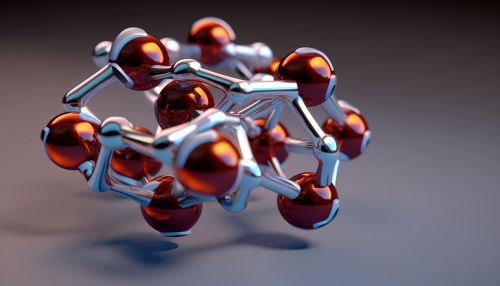Chirality in Molecular Chemistry
Introduction
Chirality is a fundamental concept in Molecular Chemistry, referring to the geometric property of a molecule that is not superimposable on its mirror image. This phenomenon, akin to the difference between left and right hands, plays a crucial role in the structure and function of many biological and synthetic molecules.


Concept of Chirality
The term "chirality" is derived from the Greek word for hand, "cheir". Just as a left hand does not fit perfectly into a right-hand glove, a chiral molecule and its mirror image (also known as its enantiomer) cannot be superimposed, regardless of their orientation. This characteristic is due to the spatial arrangement of the molecule's atoms.
Chirality is a property of asymmetry important in several branches of science, including chemistry, physics, and biology. In chemistry, it is a molecular property, while in physics, it refers to the asymmetry of physical laws under mirror reflection.
Chiral Molecules
Chiral molecules usually contain at least one carbon atom with four nonidentical substituents, known as a chiral or stereogenic center. However, chirality can also arise from other sources, such as stereogenic axes or planes, or even the total absence of any symmetry elements.
The simplest chiral molecule is methane (CH4), but it becomes chiral only when its hydrogen atoms are replaced by four different groups. A common example of a chiral molecule is lactic acid, which has two optical isomers, also known as enantiomers.
Enantiomers
Enantiomers are pairs of molecules that are mirror images of each other, just like left and right hands. They have identical physical properties (such as boiling point, melting point, and density), but they interact differently with plane-polarized light and with other chiral molecules.
This difference in behavior is crucial in many biological systems. For example, the amino acids that make up proteins are all chiral and almost exclusively exist in one enantiomeric form. This "chiral bias" is essential for the correct folding and function of proteins.
Chirality in Biological Systems
Chirality is ubiquitous in biology, with many biological molecules being chiral. Notably, the building blocks of life - amino acids and sugars - are chiral, and life selects one enantiomer over the other. For example, all amino acids in proteins are 'left-handed', while all sugars in DNA and RNA are 'right-handed'. This phenomenon is known as homochirality.
The origin of homochirality in life is a mystery and a subject of ongoing research. Some theories suggest that it is due to a chiral bias in the cosmic rays that bombarded the primordial Earth, while others propose that it is a result of autocatalytic chemical reactions.
Chirality in Drug Design
Chirality is also of great importance in pharmacology, as the two enantiomers of a chiral drug can have drastically different biological activities. One enantiomer may produce the desired therapeutic effect, while the other may be inactive or even harmful.
For example, the drug thalidomide, used in the 1950s to treat morning sickness in pregnant women, is a notorious example of the importance of chirality in drug design. One enantiomer of thalidomide is effective as a sedative, but the other causes severe birth defects. This tragedy led to stricter regulations for the testing and approval of chiral drugs.
Determination of Chirality
The determination of chirality is a key aspect of stereochemistry. Various methods can be used to determine the absolute configuration of a chiral center, including X-ray crystallography, NMR spectroscopy, and optical rotation measurements.
Conclusion
In conclusion, chirality is a fundamental concept in molecular chemistry with far-reaching implications in biology and pharmacology. The study of chirality not only provides insights into the structure and function of molecules but also guides the design of new drugs and materials.
